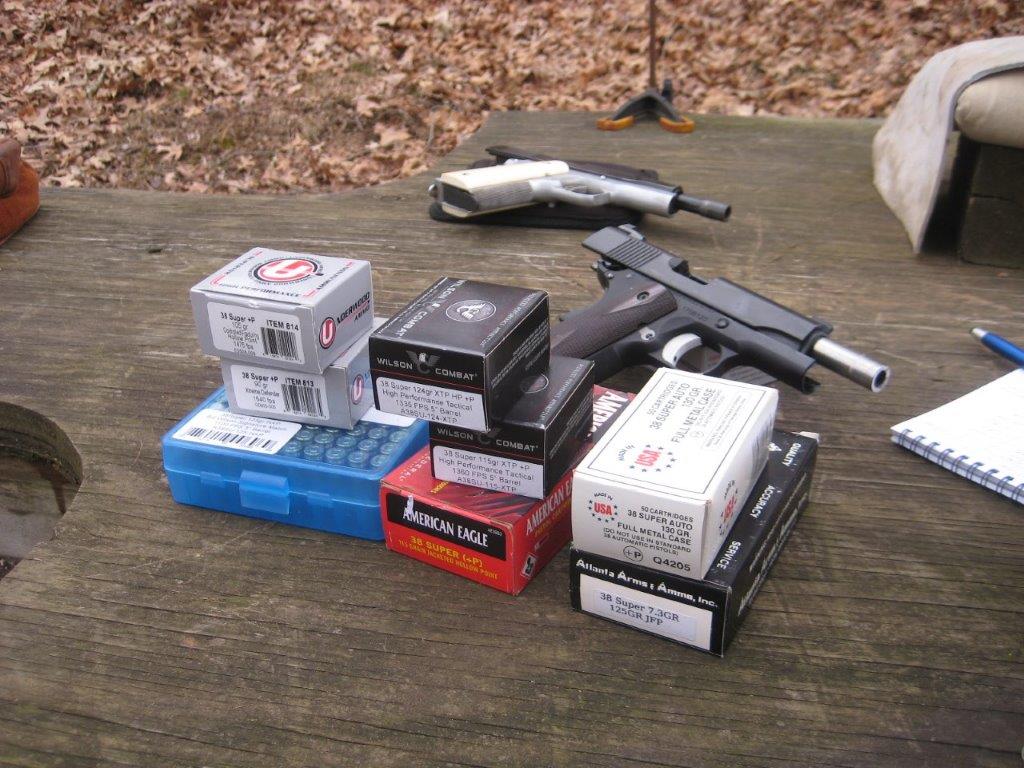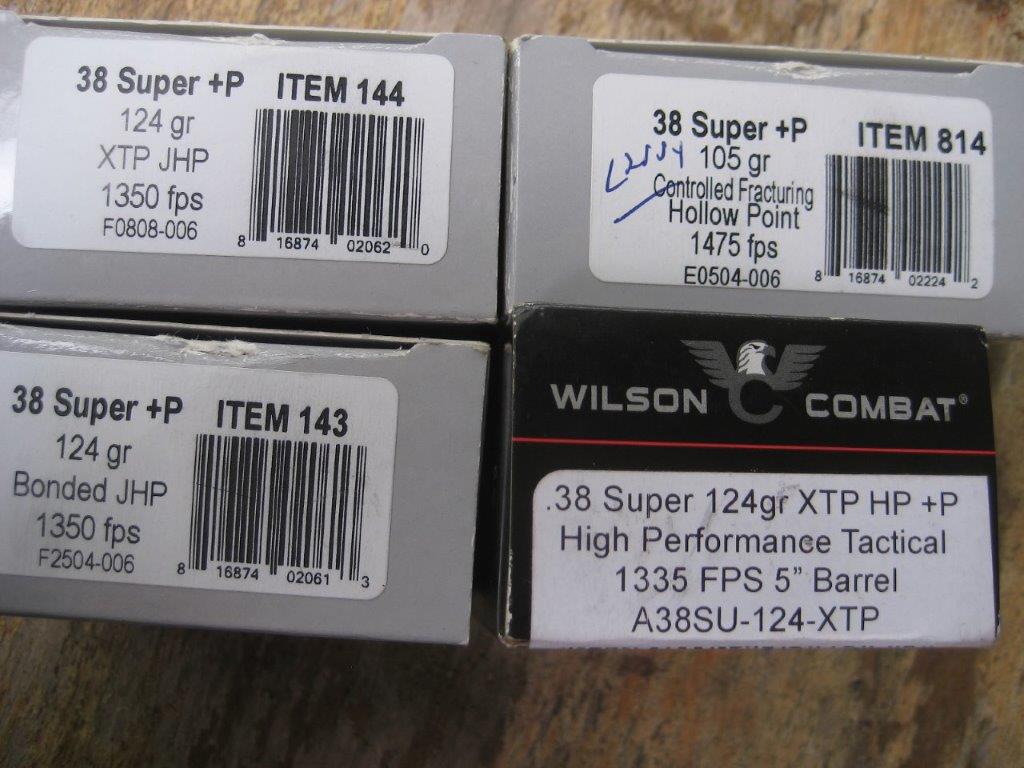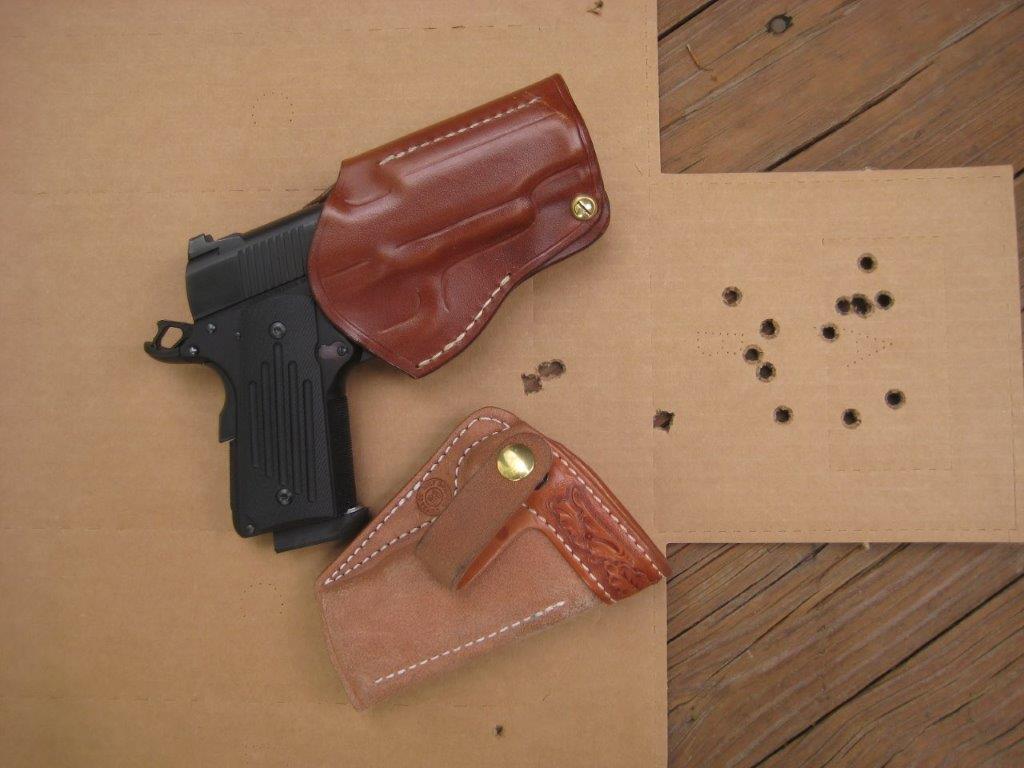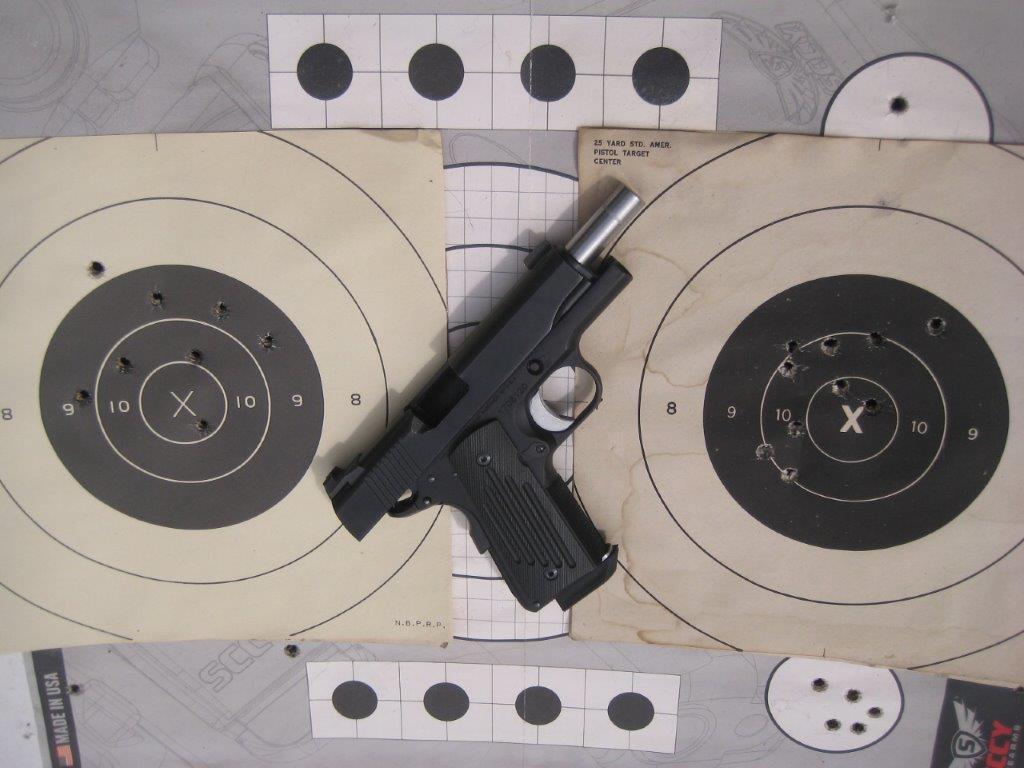
By John Markwell | Contributing Editor
We haven’t had much interest in Colt’s .38 Super cartridge since back in the dark ages of practical shooting.
Some of you may remember those times past when all 1911s, almost exclusively Colts, were essentially featureless as they came from the factory and one’s only recourse to getting upgrades on your dream gun was to send it off to your Gun Plumber of choice with a list of desired modifications and a substantial check. My how times have changed!
Recent acquisition of a discontinued, but new to us, Dan Wesson CCO 1911 in .38 Super has rekindled our interest in this almost 100-year old round and led us to review some of the current ammunition offerings since we plan on carrying the new pistol. The .38 Super has come a long way from the original loading of 130gr. FMJ bullets at 1280fps with several manufacturers now offering defensive rounds utilizing modern high-tech bullets.
The .38 Super was first introduced in the late 1920s in the Colt model 1911A1 pistol (and a few Thompson submachine guns). It was engineered to penetrate the body armor and automobiles of the time that were commonly used by the era’s bad guys (and gals). Essentially a slightly “magnum-ized” version of the .38 ACP, the Super had a pretty good commercial run until the advent of the S&W .357 Magnum revolver in 1934/35.
The .38 Super has long been popular in the Latin American countries that ban possession of military cartridges for civilians and has had its’ ups and downs in popularity in the U.S. with a big boost due to IPSC/USPSA. However, compared to the 45ACP and the 9MM, the .38 Super remains, for lack of a better description, sort of a “cult cartridge”; folks who shoot the Super love it, while many others have never even heard about it. An acquaintance recently collared me to ask about a .38 Super Colt Combat Commander he had recently purchased. Since he had never heard of the .38 Super, he thought he had acquired a true rarity.
Our first experience with the .38 Super takes us back to our early IPSC days. In the early 1980s we had Oklahoma pistol smith Bud Price build us a state of the art, for the time, 38 Super on a Colt Government Model. The plan we had, like many IPSC shooters of the day, was to gain an edge by making major with less recoil than the 45ACP and having a slightly increased magazine capacity. For some, this seemed to work out pretty well, but in our case the whole idea turned out to be more trouble than it was worth.

The Wilson Comp-Gun changed this for those that had them built; we however had a 5-inch gun built. What we did end up with was a pretty neat gun, even if it did languish in the safe more often that it went to the range or get carried. Bud Price did a great job on our old .38 Super Colt. It has a Smith & Wesson K-frame revolver rear sight set down in the top of the slide and an MMC front ramp silver soldered in place.
The highly-polished slide has a milled .275” wide rib on top which is serrated to match the rear sight’s forward extension, and is brightly blued. The front strap of the frame is hand checkered at 20 lines-per-inch, as is the main spring housing. The magazine well is simply beveled in the fashion of the time and the frame is hard chromed, giving the old Colt the classic two-tone look of the early IPSC guns. And, this old .38 Super has one of Armand Swenson’s extended thumb safeties as did most true “combat guns” of the day.
Being a Series 70 Colt, the Collet bushing was retained but the skinny barrel was hard fit along with the slide. The gun was a mediocre shooter despite all this work. 25-yard groups have averaged just over 3.5-inchs over the years, regardless of the ammunition used. It was, and is, a pretty cool gun none-the less; it’s certainly accurate enough for defensive use and, it is 100% reliable.
Fast forward to the present and a “modern” 1911 pistol in .38 Super rekindles our interest in the current offerings in defensive ammunition for the 100-year old Super. The Dan Wesson CCO we acquired recently is a modernized version of the .38 Super 1911 in every way. First and foremost, the DW CCO has a ramped barrel which headspaces on the case mouth of the cartridge and offers full support to the case head. This head spacing modification, pioneered by Irv Stone of Bar-Sto barrels, greatly improves accuracy in .38 Super pistols. Feature-wise, the Dan Wesson folks, like many other 1911 manufacturers today, offer production pistols that are as nicely appointed as many of the custom guns of yore. Good sights, fitted beaver tail grip safeties and solid bushings, great barrel and slide fitting, checkering, speed safeties, carry-beveling, and good triggers are common today on many production 1911s. Our Dan Wesson .38 Super CCO is an exceptional example. We like this little semi-compact pistol lot and, as mentioned above, plan on carrying it, hence our search for a defensive load for the pistol.
Velocity; FPS
Model: 4.25”CCO 5” Govt.
American Eagle +P 115-grain JHP 1086 1087
Wilson Signature Match 124-grain HAP 1090 1078
Wilson 115-grain XTP +P 1357 1358
Wilson 124-grain XTP +P 1330 1336
Underwood +P Extreme Defender 90-grain 1540 1548
Underwood +P 105gr. Controlled fracturing HP 1402 1385
Underwood +P 124-grain XTP 1298 1265
Underwood +P 124-Grain Bonded JHP 1310 1292
Atlanta Arms 124-grain JFP 1351 1352
Winchester white box 130-grain FMJ 1161 1167
Unfortunately, due to the lack of popularity of the .38 Super, there are not a lot of loads commercially available that are designed for self-defense. Fortunately, there are some. We acquired samples from Wilson Combat, Underwood, Federal/American Eagle, and Atlanta Arms for a side by side test out of the two pistols described above. Our old ‘80s vintage Bud Price combat converted Colt has a five-inch barrel while the DW CCO has a Commander slide/barrel assembly of 4.25-inches. A quick look at the chronograph results shows little gain or loss of velocity due to the 3/4-inch difference in barrel length of the two pistols.
All of the ammunition tested was 100% reliable in both test guns. Accuracy of all the loads tested was way better than MOBG (minute of bad guy), easily passing the “hand rule” out to twenty yards. Due to our limited supply of ammunition, we did our final range testing with the DW CCO exclusively. We ran several timed drills with the DW .38 Super to access the general handling of the pistol/cartridge combo, the over-all performance of each load and their POA/POI when shot from the 4.25-inch Commander length upper/barrel assembly of the CCO.

We used two drills from our buddy Ken Hackathorn for our final evaluation of the selected loads; the Wizard drill and the 10x10x10 drill (we actually shot to the capacity of the CCO which is 9 rounds) and a head shot drill at 50 feet simulating the recent Texas church defense shooting (although a .357 Sig was used in that incident to stop the attack).
This is just a brief run down on how we select our carry ammunition; it is not an all- encompassing test but serves our needs within our limited budget. Hopefully you’ll get some ideas for your own testing from this article. So, what have we concluded from this limited test? Well, as expected, some of the .38 Super loads were a bit harder to handle in the lightweight DW CCO than in the full-sized Government Model pistol. Snappy is the best term to describe the recoil of the mid-1300FPS .38 Super loads in the aluminum framed compact pistol which leads to slightly longer recovery time, shot to shot; splits for competition guys. Recoil recovery and timely re-acquisition of the front sight are key to getting good multiple hits on target. Since we plan on carrying this .38 Super DW CCO, we were looking for a load that was a bit more powerful than a 9mm load with a similar bullet weight yet was pretty controllable in multi-shot scenarios. For us, this came down to a choice between the following after the final drills had been shot.

From Underwood the following .38 Super loads made the final cut; 124-grain XTP JHP @1298fps, 124-grain bonded JHP @ 1310fps and their 105-grain Controlled Fracturing HP @ 1402fps. From the Wilson Combat lineup, we selected the 124-grain XTP HP +P load at 1330fps.
Depending on our supply, any of these loads will inspire confidence in our new-to-us Dan Wesson .38 Super CCO. However, if we could design what we believe would be the ideal defensive load for the .38 Super cartridge it would propel a 135-grain Hornady FLEXLOCK bullet from a nickel-plated case at a velocity of 1325 fps. Essentially this would be a beefed-up version of the new FBI 9mm service round. Regardless of the ammunition chosen, this Dan Wesson .38 Super CCO, sheathed in either a Milt Sparks #1AT-RT or their 50-year anniversary carved Summer Special, will do to “ride the river with”. IMG_2566-There was a time when 130-grain ball ammo was all that was available for the .38 Super; this is a vintage “Spam can” of GI .38 Super.



